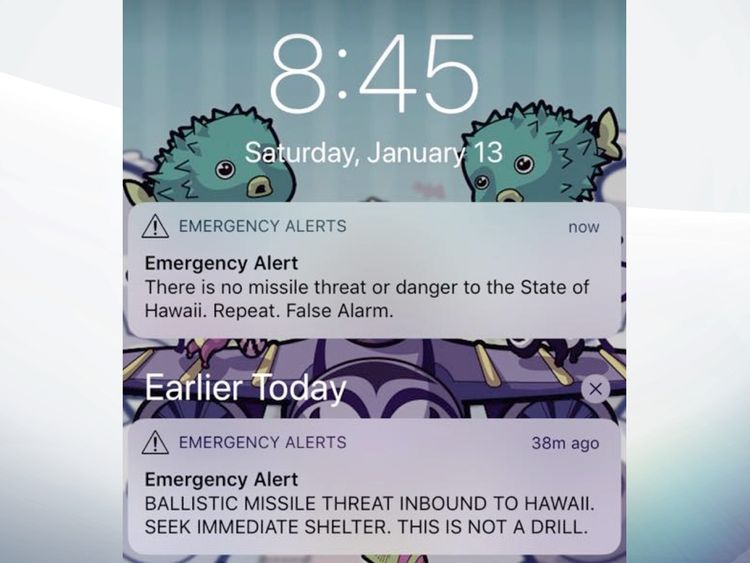The man who sparked panic after warning a missile was heading for Hawaii has said he was "100% sure" the alert was real at the time.
He also revealed he has been having trouble eating and sleeping ever since his massive mistake.
The US state had been testing its alert capabilities on 13 January when the Emergency Management Agency staff member got the wrong end of the stick.
All mobile phones, TV and radio stations on the islands were sent the alert, which read: "Ballistic missile threat inbound to Hawaii. Seek immediate shelter. This is not a drill."
It took 38 minutes for officials to send another alert to say it was a false alarm.
Speaking anonymously – because he says he has received threats – the man in his 50s said the call that came in over a secure line did not sound like a drill.
"When the phone call came in, someone picked up the receiver instead of hitting speaker phone so that everyone could hear the message," he said.
Despite other workers apparently hearing the word "exercise" repeated several times at the start of the message, the man did not.
"I heard the part, 'this is not a drill'," he said. "I didn't hear exercise at all in the message or from my co-workers."

The man said the moment he realised his mistake felt like a "body blow".
It was not the first time the man had believed drills were the real thing, state officials revealed.
In the past he had mistaken tsunami and fire warnings for actual events, and colleagues were said to be uncomfortable working with him.
His managers knew for years he was struggling to do his job but continued to renew his contract, said officials.
The man said he disputed that and claimed he was not aware of any performance problems.
More from Hawaii
A federal and state report earlier this week said the checklist for missile alerts was vague, managers did not need a second person to sign off the alerts before sending, and they had not prepared for how to correct a false alarm.
Hawaii's governor also admitted after the gaffe that he could not correct the false alert himself because he did not know his Twitter log-on and password.
[contf] [contfnew] 
Sky News
[contfnewc] [contfnewc]





